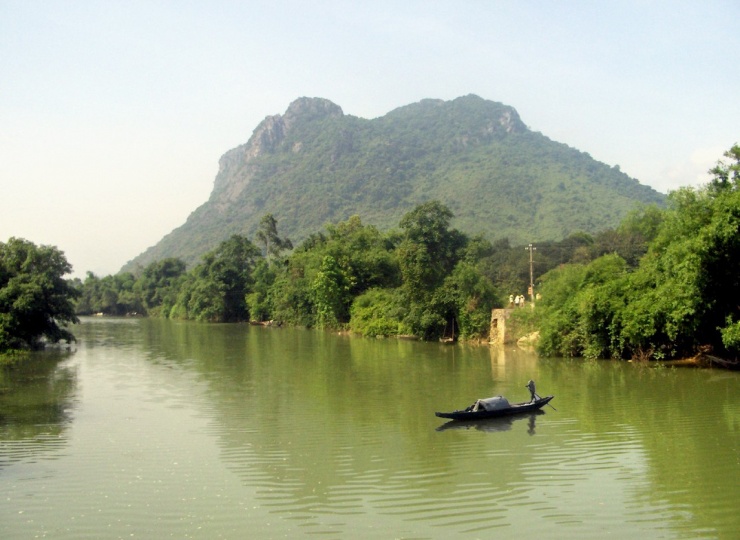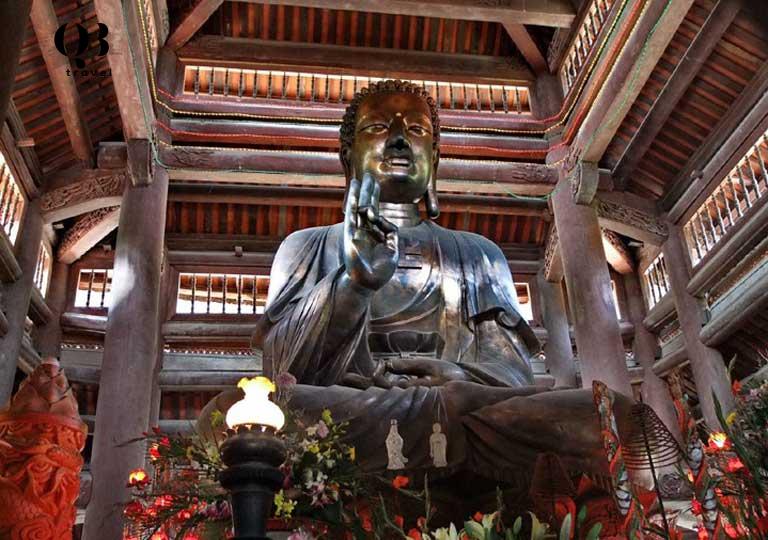Kim Phong Pagoda
1. Overview
Kim Phong Pagoda (Vietnamese: Chùa Kim Phong) is a peaceful and modest Buddhist temple located in Quảng Phương commune, Quảng Trạch District, in Quảng Bình Province, central Vietnam. Though not as widely known as some other major temples, Kim Phong Pagoda holds deep cultural and religious value for the local community. It serves as a sacred place for worship, meditation, and Buddhist education, nestled in the quiet countryside, away from the bustling city.
2. Historical Background
Kim Phong Pagoda has its roots in the early Nguyễn Dynasty and has served the region for over 200 years. It was built by local monks and villagers who were devoted to preserving Buddhist teachings and spiritual practices. Throughout its history, the temple has undergone various restorations, especially after damage caused by natural elements and the harsh conditions of war.
Despite being relatively small and humble, Chùa Kim Phong has always been spiritually significant to the surrounding communities. It reflects the enduring presence of Buddhism in the everyday lives of rural Vietnamese people and stands as a testament to their faith and resilience.
3. Architectural Features
Kim Phong Pagoda is a beautiful example of rural Vietnamese temple architecture, characterized by simplicity, harmony with nature, and spiritual symbolism. Notable features include:
-
Tam Quan Gate: A simple three-entrance gate that symbolizes the transition from the physical world to the spiritual realm.
-
Main Worship Hall (Chánh Điện): The central sanctuary of the temple, where statues of Shakyamuni Buddha, Guanyin (Avalokiteshvara), and other deities are worshipped. The altar is modest but dignified, decorated with incense burners, lanterns, and ancestral tablets.
-
Wooden Pillars and Tiled Roofs: Traditional wooden columns, carved with Buddhist motifs, support the tiled roofs. The structure is designed to be cool in summer and warm in winter.
-
Peaceful Garden and Courtyard: The temple grounds feature bonsai trees, small stone paths, and flower beds, creating a tranquil setting perfect for quiet reflection and prayer.
4. Cultural and Religious Importance
Although Kim Phong Pagoda is not a major tourist destination, it holds significant meaning for local residents and contributes to preserving Buddhist culture in Quảng Bình:
-
🛐 Community Worship Center: The temple hosts regular Buddhist ceremonies, especially during the Lunar New Year, Vesak (Buddha’s Birthday), and Vu Lan Festival, drawing many worshippers from the surrounding villages.
-
📚 Buddhist Learning: It also functions as a small center for Buddhist teachings and moral education, particularly for the youth, promoting compassion and mindfulness.
-
🧘 Spiritual Sanctuary: With its peaceful ambiance, Chùa Kim Phong is ideal for meditation, quiet reflection, and personal prayer, attracting monks, nuns, and lay Buddhists seeking inner peace.
-
🧭 Preserving Local Heritage: The pagoda is a cultural treasure of Quảng Trạch District, showcasing the spiritual and architectural traditions of rural Vietnam.
5. Visiting Information
-
Location: Quảng Phương commune, Quảng Trạch District, Quảng Bình Province, Vietnam
-
Opening Hours: Daily from early morning to evening
-
Entrance Fee: Free
-
How to Get There: Around 60 km north of Đồng Hới City, best accessed by motorbike or private car
-
Ideal For: Pilgrims, cultural tourists, meditation practitioners, and those seeking a quiet countryside temple experience
6. Conclusion
Kim Phong Pagoda may not be grand in size, but it carries profound spiritual weight for the people of Quảng Bình. It stands quietly among fields and trees, offering a place of peace, reflection, and cultural continuity. For those interested in exploring Vietnam’s lesser-known but meaningful spiritual sites, Kim Phong Pagoda provides an authentic and enriching experience far from the tourist crowds.



